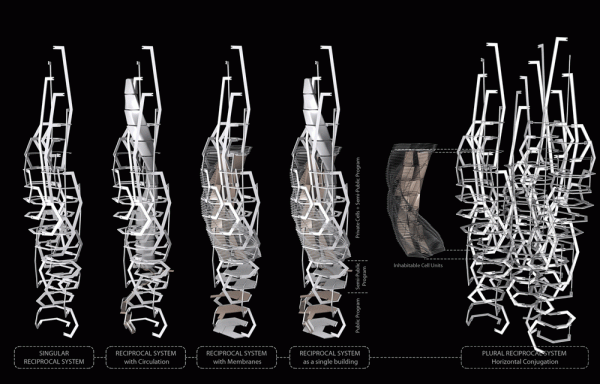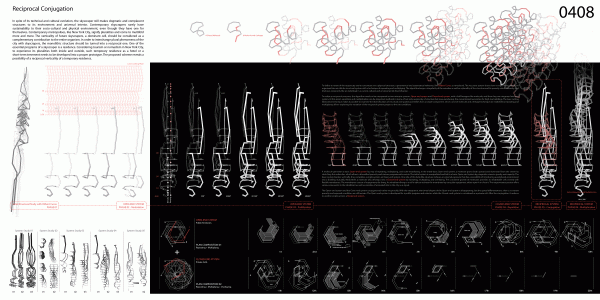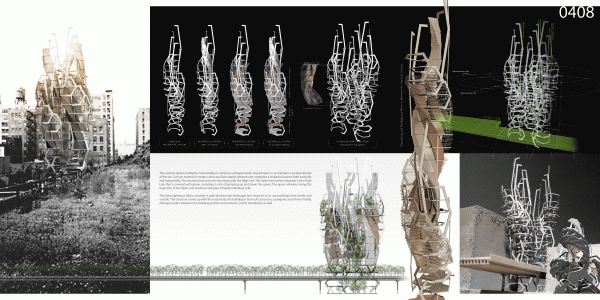1st Place
2006 Skyscraper Competition
Changhak Choi
United States
Even though we have reached an era of advanced technology, the majority of the skyscrapers are structures that don’t provide sustainability to their social, cultural, and ecological environment. In a contemporary and diverse metropolis, such as New York City, the skyscraper should be a reciprocal organism that interacts with its many different layers. In this case, the proposed skyscraper recognizes New York as a temporal residence for millions of students, artists, and tourists.
The proposed scheme analyzes their short-term needs and creates a system of organization around a single geometric unit. The combination of multiple units provides a structural, programmatic, and formal solution to the skyscraper.
The proposed algorithm identifies the singularity and plurality of the geometric unit, depending on the location and use of the tower; a reciprocal system that adapts to its environment. The basic shape of this cell is a deformed hexagon that through multiplication, repetition, and deformation creates an open-end and close-end system.
Once a linkage technique between the units is established it is possible to explore a suitable reciprocal system for a specific location. A unit generates a basic open-end system by repeating, multiplying, and scaling. It grows upwards and downwards from the center allowing porosity and different programmatic events. The system is complete only when every single requirement is met.
















